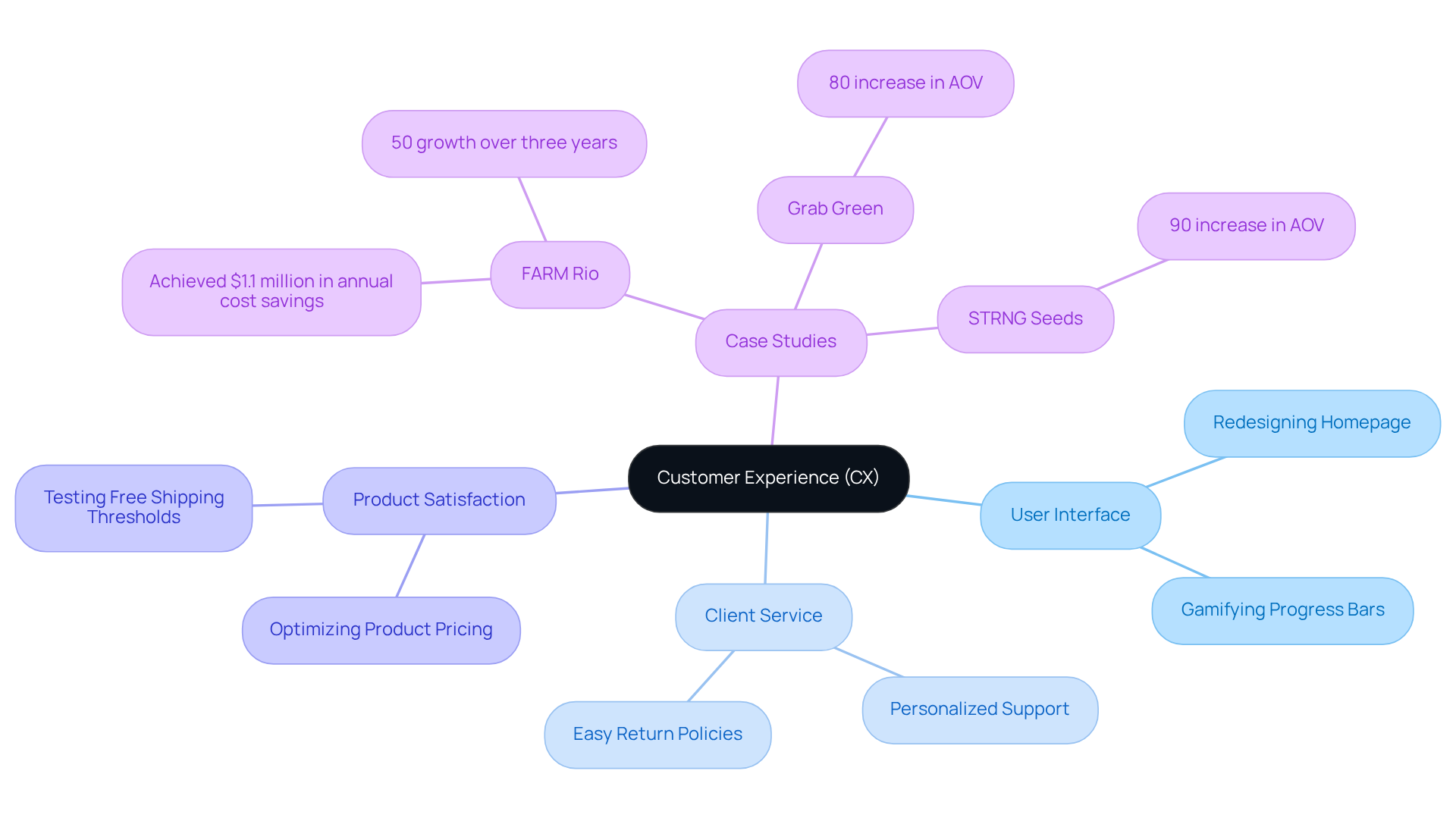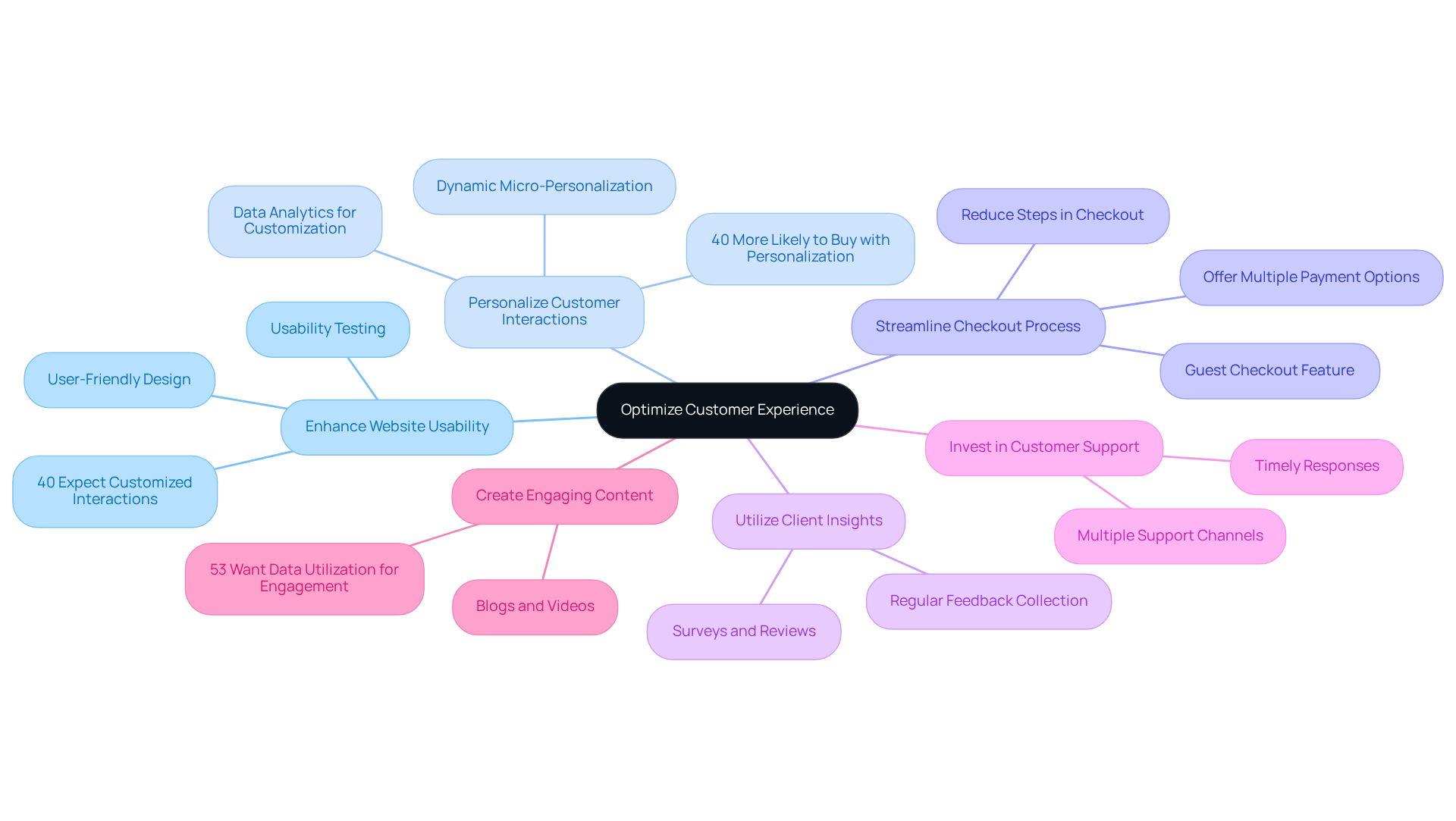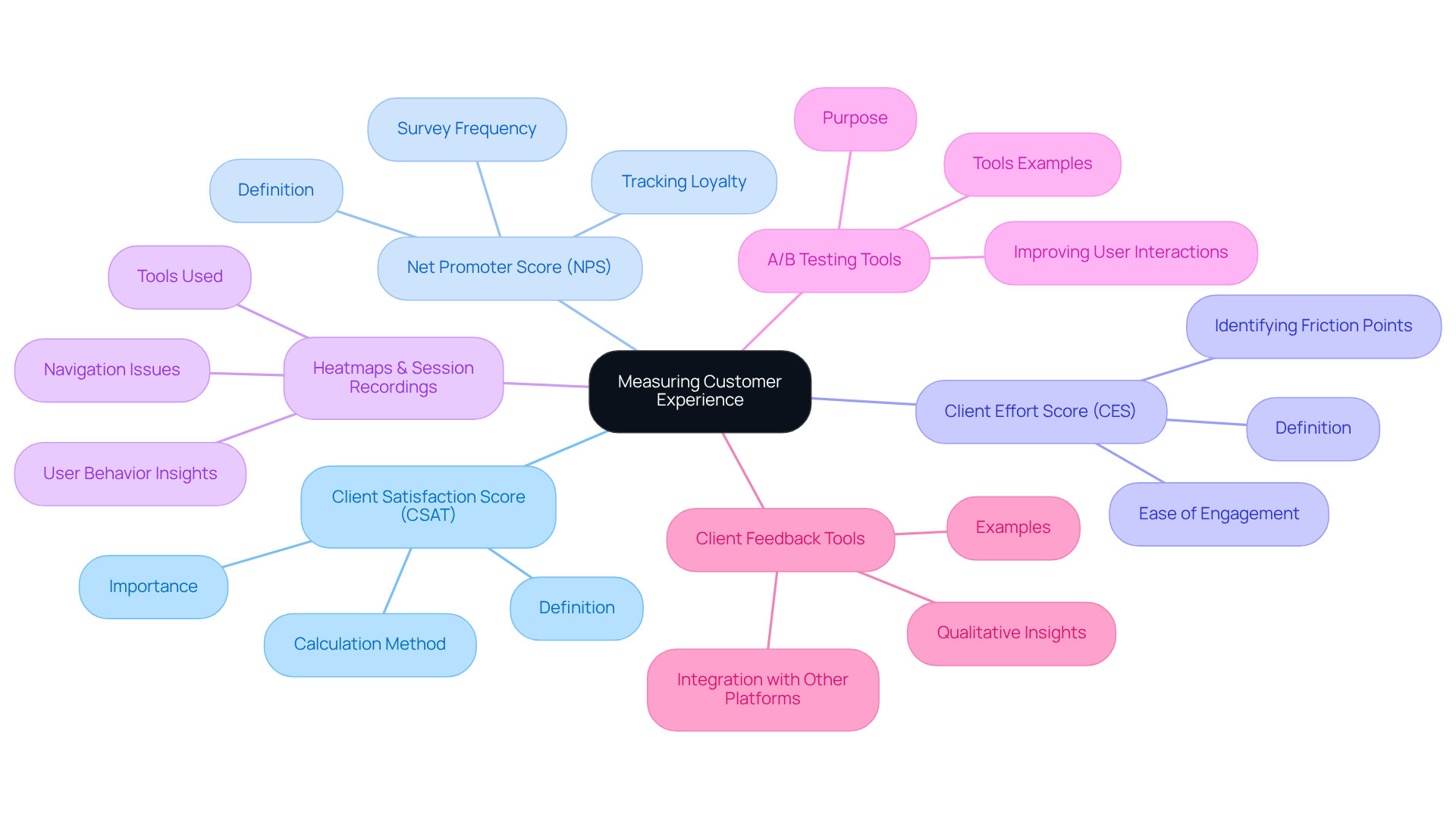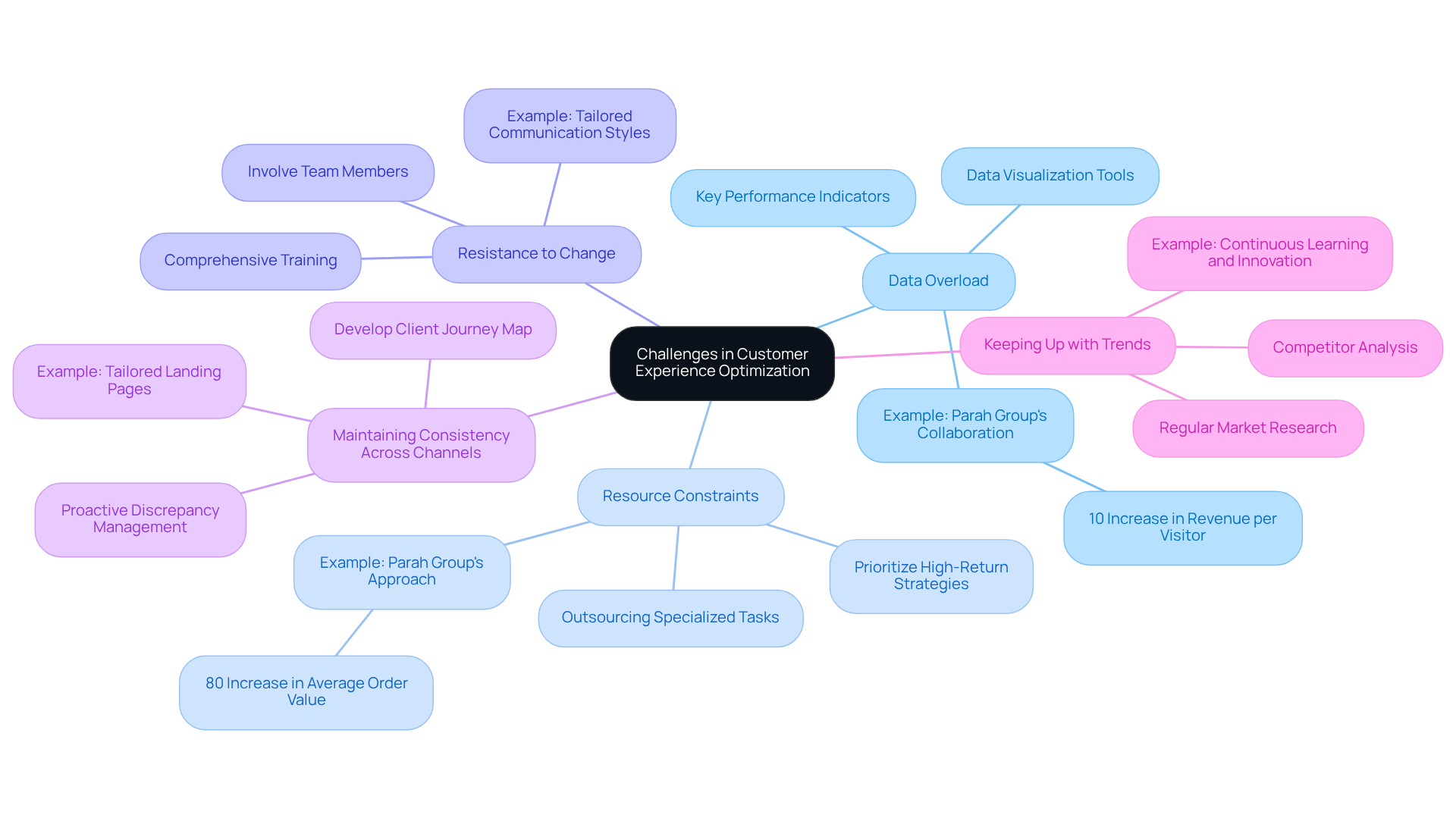
Overview
The article asserts the critical role of direct-to-consumer (DTC) brands in optimizing customer experience (CX) to bolster client loyalty and elevate conversion rates. It delineates essential strategies that include:
- Enhancing website usability
- Personalizing customer interactions
- Leveraging metrics such as Customer Satisfaction Score (CSAT) and Net Promoter Score (NPS)
These elements are pivotal for comprehending and improving customer satisfaction within a competitive landscape, thereby reinforcing the necessity for DTC brands to adopt these practices effectively.
Introduction
In an increasingly competitive landscape, direct-to-consumer (DTC) brands are recognizing that customer experience (CX) is not merely an add-on; it is a vital component that can determine their success. The ability to enhance conversion rates and cultivate brand loyalty underscores the necessity of optimizing CX for driving repeat purchases and maximizing customer lifetime value.
Yet, how can DTC companies adeptly navigate the complexities of customer interactions to guarantee satisfaction and loyalty in a constantly evolving market? This article explores key strategies and insights that DTC brands can adopt to elevate their customer experience, ultimately transforming challenges into opportunities for growth.
Define Customer Experience and Its Importance for DTC Brands
Customer experience (CX) encompasses the overall impression an individual forms about a company through their interactions during the client journey. For direct-to-consumer (DTC) companies, it is essential to optimise customer experience, as it directly correlates with conversion rates and client loyalty. A positive CX can lead to repeat purchases, increased average order values (AOV), and enhanced customer lifetime value (CLV). For example, a $30 million apparel company partnered with Parah Group and achieved a remarkable 35% increase in conversion rates by implementing strategies such as:
- Redesigning their homepage to highlight social proof
- Gamifying the progress bar for free shipping thresholds
- Optimizing product pricing
Conversely, negative experiences often lead to cart abandonment, with nearly 50% of shoppers leaving their carts due to unexpected fees, underscoring the critical importance of cost transparency in the purchasing process.
Understanding the key components of CX—such as user interface, client service, and product satisfaction—is vital for companies aiming to optimise customer experience and succeed in a competitive market. A case study involving Grab Green, a $15 million revenue cleaning product brand, illustrated that by testing free shipping thresholds and introducing bundles, they achieved an impressive 80% increase in AOV. Additionally, 40% of retailers acknowledge that enhanced return policies directly influence consumer spending, emphasizing how effective CX strategies can significantly boost profitability. As client acquisition costs (CAC) continue to rise, prioritizing efforts to optimise customer experience becomes a strategic move to mitigate these expenses by fostering loyalty and encouraging repeat business. The integration of AI technologies also plays a pivotal role in enhancing user experiences, allowing companies to personalize interactions and optimize service.
By placing a premium on optimising customer experience, DTC companies can not only differentiate themselves but also cultivate client loyalty, ultimately driving revenue growth without becoming overly reliant on advertising expenditures. A case study of STRNG Seeds, a rapidly expanding DTC company in the cannabis sector, further illustrates this point, as they boosted their AOVs by 90% through targeted strategies like:
- Offering free gifts for orders over a certain cart size
- Implementing post-purchase upsells
This strategic focus on client satisfaction is not merely advantageous; it is increasingly becoming a prerequisite for success in the evolving DTC landscape.

Implement Key Strategies to Optimize Customer Experience
DTC brands must implement key strategies that drive engagement and satisfaction to optimise customer experience.
-
Enhance Website Usability: Prioritizing a user-friendly website with intuitive navigation and responsive design is essential. Conducting usability testing to identify pain points is critical, especially since nearly 40% of consumers expect customized online shopping interactions. This underscores the necessity for seamless usability.
-
Personalize Customer Interactions: Utilizing data analytics to customize marketing messages and product recommendations based on individual customer behaviors and preferences is vital. Studies reveal that 40% of U.S. consumers are more inclined to purchase from brands that offer tailored interactions, making personalization a key strategy.
-
Streamline the Checkout Process: Simplifying the checkout experience by reducing the number of steps and providing various payment options is crucial. Features like guest checkout can significantly decrease friction, thereby enhancing overall satisfaction.
-
Utilize Client Insights: Regularly collecting and examining client feedback through surveys and reviews allows brands to pinpoint areas for enhancement. This practice fosters engagement and aligns with consumer expectations to optimise customer experience through tailored interactions.
-
Invest in Customer Support: Offering multiple support channels, including live chat, email, and phone support, ensures timely and effective responses to inquiries. A robust support system enhances client trust and loyalty, which are crucial for long-term success.
-
Create Engaging Content: Developing content that resonates with your audience—such as blogs, videos, and social media posts—is essential. Captivating content not only enhances customer loyalty but also aligns with the increasing consumer desire for personalized interactions. Notably, 53% of consumers want companies to utilize their data for customized engagement.

Utilize Tools and Metrics for Measuring Customer Experience
To effectively measure customer experience, DTC brands must leverage essential tools and metrics that provide comprehensive insights into client satisfaction and loyalty.
Client Satisfaction Score (CSAT) serves as a straightforward metric that gauges client satisfaction through post-interaction surveys. The CSAT score is calculated by summing the number of satisfied clients (ratings of 4-5), dividing by the total number of responses, and then multiplying by 100. This method offers prompt feedback on experiences, allowing brands to respond swiftly to client needs.
Net Promoter Score (NPS) evaluates customer loyalty by asking how likely individuals are to recommend your company to others. Conducting NPS surveys periodically is crucial for tracking client sentiment and maintaining loyalty over time.
Client Effort Score (CES) assesses the ease with which clients engage with your brand, particularly during the buying process. This metric is vital for identifying friction points that may hinder client satisfaction, enabling brands to streamline interactions.
Heatmaps and Session Recordings provided by tools like Hotjar or Crazy Egg reveal user behavior on your website. These insights help identify navigation issues and areas for improvement. Hotjar also allows for session recordings, which are essential for observing real user interactions and comprehending user behavior in depth.
A/B Testing Tools such as Optimizely or VWO empower companies to evaluate different versions of web pages. By identifying which components enhance user satisfaction and increase conversions, brands can align their strategies with the goal of improving user interactions.
Client Feedback Tools like SurveyMonkey or Typeform enable companies to gather qualitative feedback, offering deeper insights into user interactions and preferences. These tools can seamlessly integrate with platforms like Mailchimp and Salesforce, streamlining workflows and enhancing data collection.
By implementing these metrics, DTC companies can gain a thorough understanding of client satisfaction and loyalty, ultimately refining their service strategies to optimise customer experience and better meet client expectations.

Overcome Challenges in Customer Experience Optimization
DTC brands face several significant challenges in optimizing customer experience, which must be addressed with strategic precision:
-
Data Overload: The sheer volume of customer data can overwhelm companies, complicating the extraction of actionable insights. To combat this, focus on key performance indicators that align with your business objectives. Leverage data visualization tools to streamline analysis and interpretation. For instance, Parah Group's collaboration with a $30M clothing line resulted in a 10% increase in revenue per visitor by optimizing data usage to emphasize social proof and reviews.
-
Resource Constraints: Many DTC companies operate under tight budgets and limited personnel, hindering optimization efforts. To maximize impact, prioritize strategies that yield the highest returns. Consider outsourcing specialized tasks to experts when necessary. Parah Group's effective approach helped a $15M cleaning product brand increase average order value (AOV) by 80% through strategic bundling and pricing tests, demonstrating how targeted efforts can yield significant returns.
-
Resistance to Change: Employees may show hesitance in adopting new processes or tools. To foster a culture of continuous improvement, involve team members in the process to optimise customer experience and provide comprehensive training on new systems. Parah Group emphasizes this by tailoring communication styles to individual client needs, ensuring all team members are aligned with new strategies.
-
Maintaining Consistency Across Channels: Delivering a seamless interaction across various client touchpoints can be challenging. Develop a comprehensive client journey map to identify discrepancies and tackle them proactively. Parah Group's execution of tailored landing pages for a cannabis brand enhanced usability and reduced advertising expenses, underscoring the importance of consistency in improving user experience.
-
Keeping Up with Trends: The digital landscape is ever-evolving, making it crucial to stay ahead of trends. Regularly conduct market research and competitor analysis to remain informed about industry developments and shifting customer preferences. Parah Group's commitment to continuous learning and innovation, including attending industry workshops, ensures they remain at the forefront of CRO trends, enabling their clients to adapt swiftly and effectively.

Conclusion
Optimizing customer experience (CX) is paramount for direct-to-consumer (DTC) brands, as it profoundly impacts conversion rates and cultivates client loyalty. By enhancing CX, companies can distinguish themselves in a competitive landscape, stimulate revenue growth, and lessen their dependence on advertising. The strategies delineated in this guide underscore the critical nature of understanding customer interactions and the imperative of crafting a seamless, personalized experience that resonates deeply with consumers.
Key insights presented include the significance of:
- Website usability
- Personalized interactions
- Streamlined checkout processes
- Robust customer support
These components are essential in forging a positive customer journey that not only encourages repeat purchases but also elevates average order values. Furthermore, utilizing tools and metrics such as Client Satisfaction Score (CSAT), Net Promoter Score (NPS), and data analytics can yield invaluable insights into customer preferences and behaviors, enabling brands to continuously refine their strategies.
Ultimately, the importance of optimizing customer experience for DTC brands cannot be overstated. By prioritizing CX, brands not only enhance customer satisfaction but also cultivate enduring relationships that drive loyalty and profitability. Embracing these strategies while addressing the challenges of data overload, resource constraints, and maintaining consistency can pave the way for sustained success in the dynamic DTC landscape. Taking decisive action now to enhance customer experience will yield long-term benefits and strategically position brands for growth in an ever-evolving market.
Frequently Asked Questions
What is customer experience (CX) and why is it important for DTC brands?
Customer experience (CX) refers to the overall impression a customer forms about a company through their interactions during the client journey. For direct-to-consumer (DTC) brands, optimizing CX is crucial as it directly affects conversion rates and customer loyalty.
How does a positive customer experience affect a company's performance?
A positive customer experience can lead to repeat purchases, increased average order values (AOV), and enhanced customer lifetime value (CLV).
Can you provide an example of a DTC company that improved its conversion rates?
A $30 million apparel company partnered with Parah Group and achieved a 35% increase in conversion rates by redesigning their homepage to highlight social proof, gamifying the progress bar for free shipping thresholds, and optimizing product pricing.
What are some common reasons for cart abandonment related to customer experience?
Nearly 50% of shoppers abandon their carts due to unexpected fees, highlighting the importance of cost transparency in the purchasing process.
What key components should companies understand to optimize customer experience?
Companies should focus on key components such as user interface, client service, and product satisfaction to enhance customer experience.
How did Grab Green improve its average order value?
Grab Green, a $15 million revenue cleaning product brand, achieved an 80% increase in AOV by testing free shipping thresholds and introducing product bundles.
What impact do return policies have on consumer spending?
40% of retailers acknowledge that improved return policies directly influence consumer spending, indicating that effective CX strategies can significantly boost profitability.
How can AI technologies enhance customer experience?
AI technologies can personalize interactions and optimize service, playing a pivotal role in enhancing user experiences for DTC companies.
What strategic moves can DTC companies make to foster customer loyalty?
By prioritizing customer experience, DTC companies can differentiate themselves, cultivate client loyalty, and drive revenue growth without becoming overly reliant on advertising.
Can you give an example of a DTC company that successfully increased its average order values through customer satisfaction strategies?
STRNG Seeds, a rapidly expanding DTC company in the cannabis sector, boosted its AOVs by 90% through strategies such as offering free gifts for orders over a certain cart size and implementing post-purchase upsells.
FAQs











